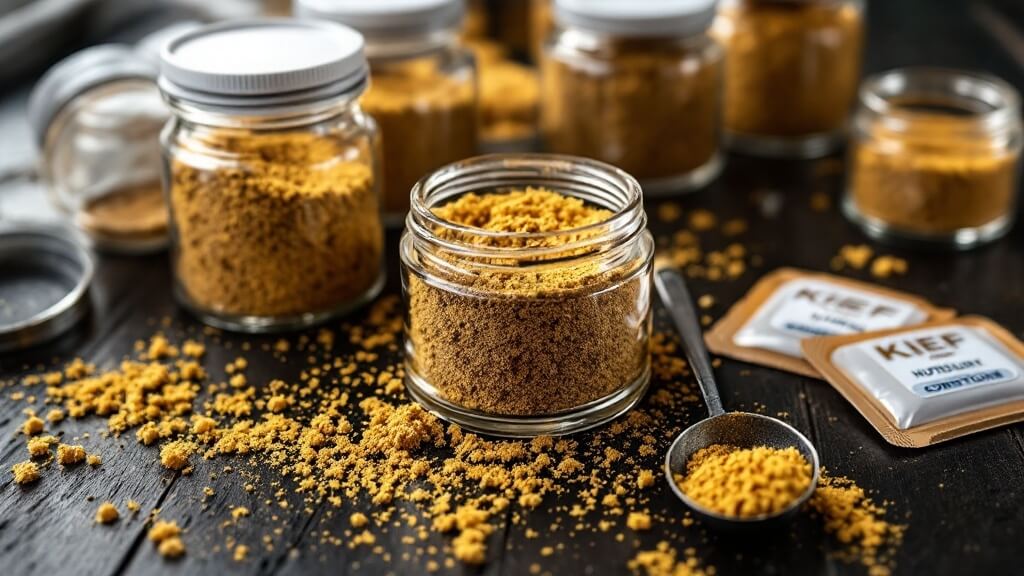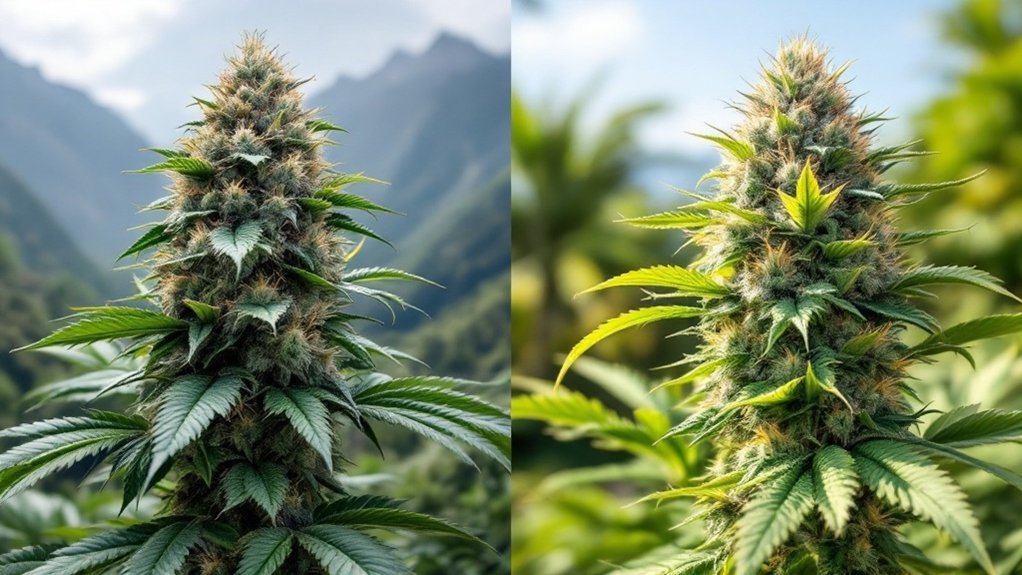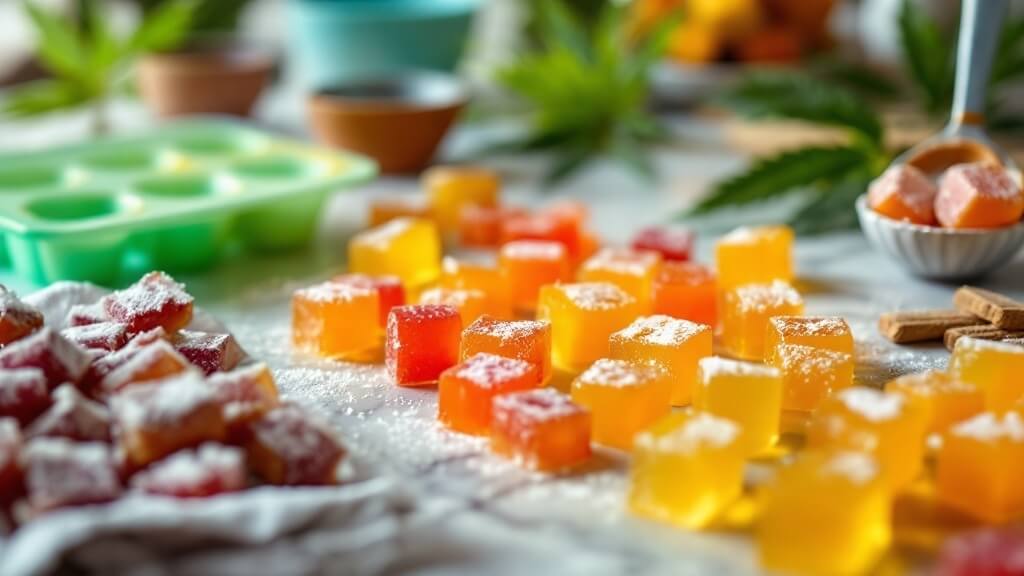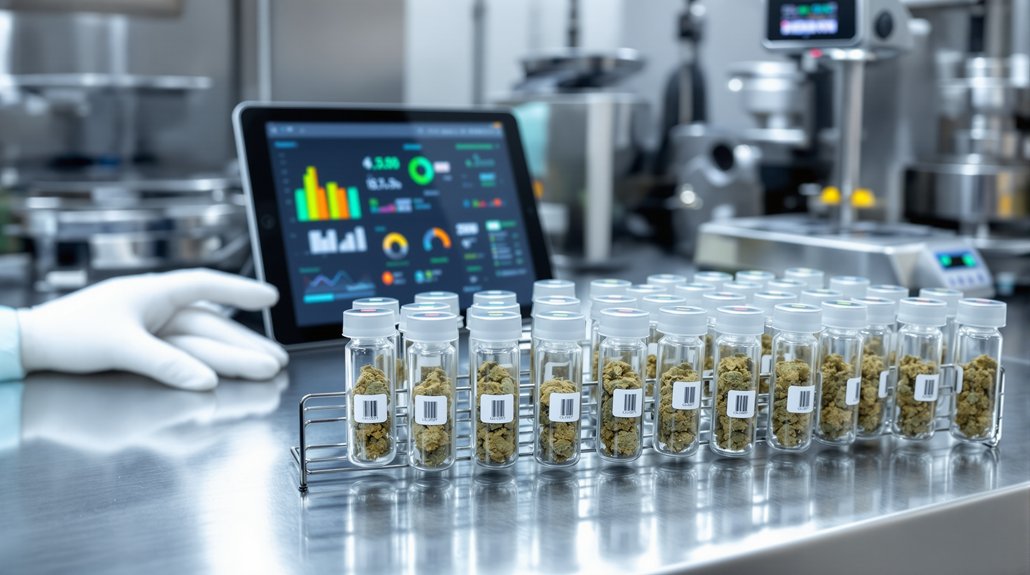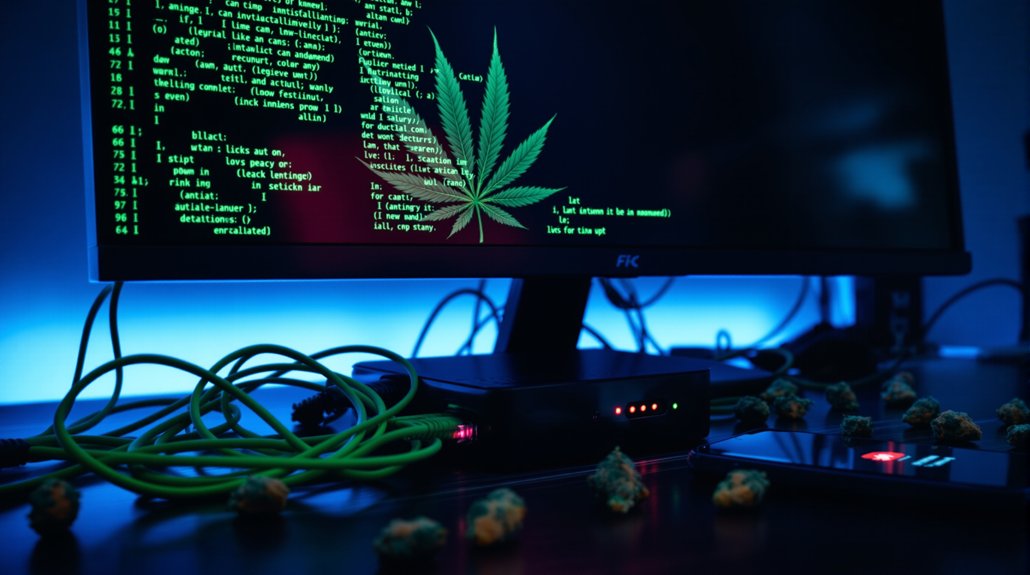Proper kief storage requires airtight glass or silicone containers to prevent static electricity and flavor transfer. Store in cool, dark places to protect cannabinoids and terpenes from degradation. For short-term storage, maintain ambient temperatures; for long-term preservation, freezing is recommended. Keep humidity levels below 60% using silica gel packets to prevent mold formation. Always handle with clean tools instead of fingers to avoid oil transfer. The right storage techniques can extend potency and quality for months.
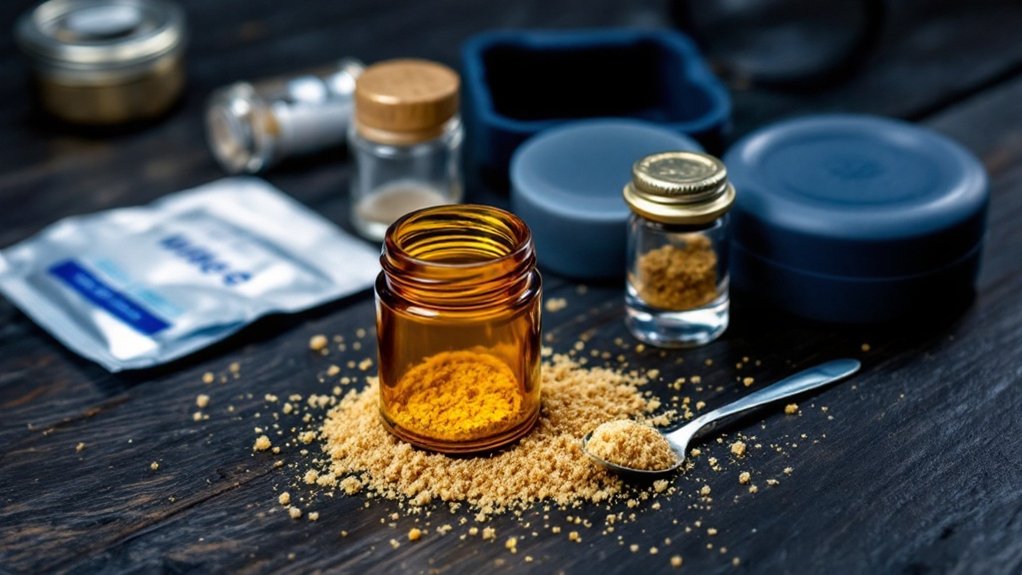
Proper storage of kief, the potent collection of trichomes separated from cannabis plant material, requires careful attention to several important factors that affect its longevity and quality. The selection of an appropriate container represents the first step in effective preservation, with airtight glass jars or silicone containers proving most suitable for this purpose.
Preserving kief’s quality demands attention to crucial storage factors, beginning with selecting appropriate airtight containers.
Glass containers offer dual advantages by preventing static electricity buildup and eliminating unwanted flavor transfer, whereas plastic containers should be avoided due to their tendency to generate static that can attract and waste valuable kief trichomes. Containers must remain tightly sealed at all times to minimize air exposure, which can accelerate degradation.
Light exposure presents another notable concern for kief preservation, as direct light degrades cannabinoids and terpenes, diminishing the product’s potency over time. Storage locations should include cool, dark environments such as cupboards or drawers, effectively shielding the substance from harmful UV rays.
Opaque or tinted containers provide additional protection against light degradation, helping to maintain the kief’s characteristic aroma and flavor profile.
Temperature control plays an important role in kief preservation, with high heat accelerating degradation and altering texture. Stable, ambient temperatures work well for short-term storage, while freezing presents a viable solution for long-term preservation spanning months to a year.
Temperature fluctuations must be minimized, as they can cause condensation that introduces moisture and potentially promotes mold growth. When properly stored, kief can maintain its potency for months, even up to a year without significant degradation.
Humidity management represents a fourth essential consideration, with excess moisture creating conditions conducive to mold formation and quality deterioration. Storage environments should remain dry to prevent clumping and potency loss, with silica gel packets serving as effective moisture absorbers within containers.
Ideal storage humidity levels should remain below 60% for best results.
Handling practices greatly impact kief quality over time. Users should minimize direct contact with fingers, instead employing clean tools like spatulas or scoops to prevent the transfer of skin oils and contaminants.
Containers require regular cleaning to prevent residue buildup, and should remain tightly closed when not in use. When used responsibly, kief provides a more potent experience compared to regular cannabis flower due to its high concentration of cannabinoids. Organizational strategies, including clear labeling with strain information and harvest dates, help users track freshness and effectively rotate their supply.
For those storing multiple varieties, dedicated storage boxes or trays facilitate organization while maintaining ideal preservation conditions.
Frequently Asked Questions
Can Kief Be Frozen for Long-Term Storage?
Kief can be frozen for long-term storage, though this method presents both benefits and drawbacks.
Freezing effectively slows cannabinoid degradation and prevents mold growth, potentially preserving potency for over a year when vacuum-sealed.
However, the process causes trichomes to become brittle, potentially reducing quality if not handled properly after thawing.
Alternative storage in cool, dark, airtight containers often provides comparable preservation without the risks associated with freezing.
Does Kief Lose Potency Over Time?
Kief gradually loses potency over time due to natural chemical degradation processes. THC, the primary psychoactive compound, converts to less potent CBN when exposed to oxygen, light, heat, and humidity.
While properly stored kief can maintain quality for up to a year, significant degradation typically begins after six months.
Visual indicators of this deterioration include color changes from golden to darker brown, texture shifts from powdery to clumpy, and the development of musty aromas replacing the original cannabis scent.
What’s the Best Container Material for Storing Kief?
Glass containers represent the ideal material for kief storage, particularly dark glass which protects against UV degradation.
They remain non-reactive, preventing static buildup that makes retrieval difficult.
Stainless steel provides excellent protection against moisture and oxidation, though may cause some static cling.
Silicone offers flexibility for short-term and portable storage needs.
Plastic should be avoided entirely as it generates static electricity, causes stickiness, and can degrade kief quality through chemical interactions.
How Can I Prevent Kief From Clumping Together?
Preventing kief from clumping requires maintaining proper humidity levels between 55-60% using humidity control packs.
Silica gel packets can absorb excess moisture that causes clumping. Regular gentle agitation of the container helps distribute moisture evenly and break up forming clumps.
Using anti-static tools like silicone brushes when handling minimizes trichome compression. Glass containers stored in cool environments reduce the tendency of kief particles to bind together through heat and moisture interaction.
Is Vacuum Sealing a Good Method for Kief Preservation?
Vacuum sealing is an excellent method for kief preservation. This technique removes air, greatly slowing degradation of cannabinoids and terpenes, thereby maintaining potency and freshness for several months to a year.
It protects against environmental factors like moisture, which prevents mold growth, especially when combined with freezer storage or stable temperatures (60–70°F/15–21°C).
Compared to standard airtight jars, vacuum-sealed kief experiences less oxidation and contamination, providing superior long-term storage results.
